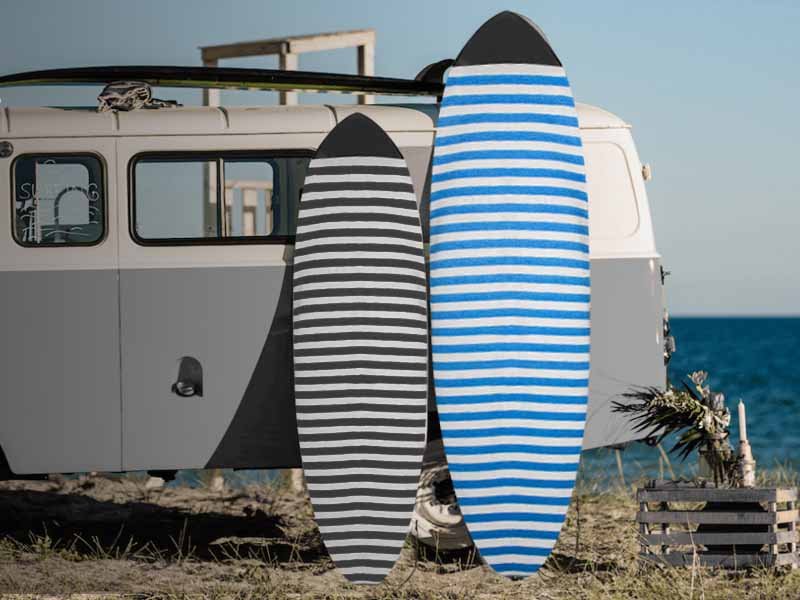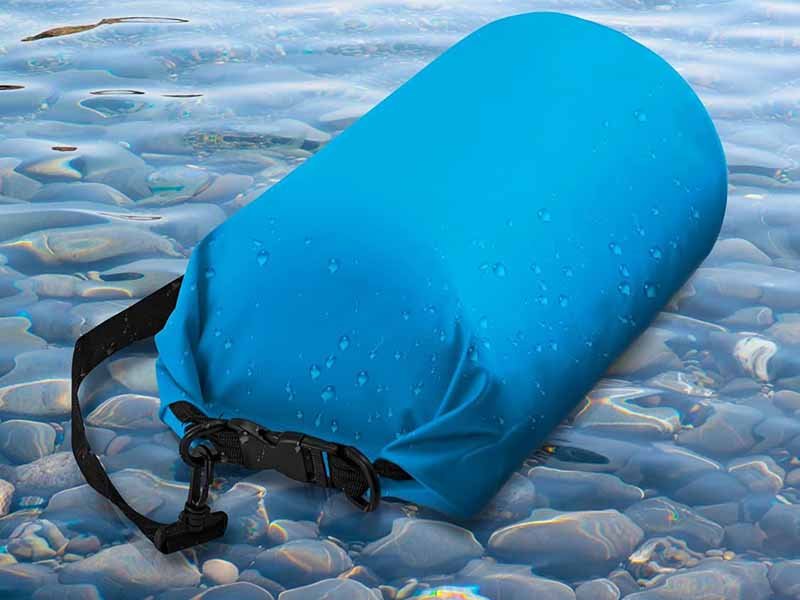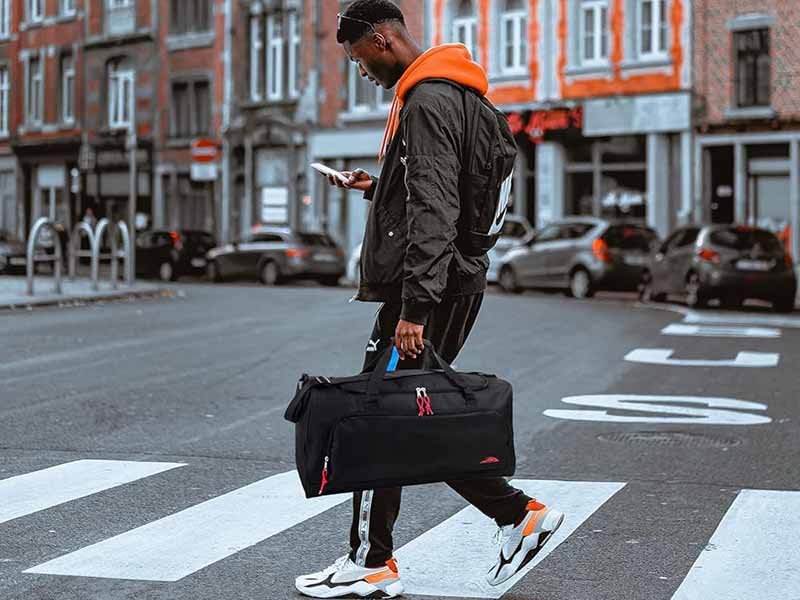In today’s hyper-competitive bag market, brands face a pivotal choice: build products from scratch or leverage a partner’s existing designs. Opting for the wrong model can inflate costs, delay launches, or dilute brand identity. By understanding OEM and ODM, you’ll unlock faster time-to-market, tighter quality control, and scalable growth—whether you’re a niche indie label or an established fashion house.
OEM (Original Equipment Manufacturing) means you supply the design, and the factory produces exactly to your specs. ODM (Original Design Manufacturing) delivers turnkey products—factories provide both design and production. OEM gives you full creative control and IP ownership, while ODM accelerates speed-to-market and requires lower upfront investment. Choosing between OEM and ODM hinges on your brand’s design resources, budget, time constraints, and long-term strategic vision.
Picture a startup brand watching its first sample prototype come to life,down to the custom zipper pull and contrast stitching,knowing their unique vision is finally tangible. Ready to dive in? Let’s explore every angle.
What Is OEM in Bag Manufacturing?
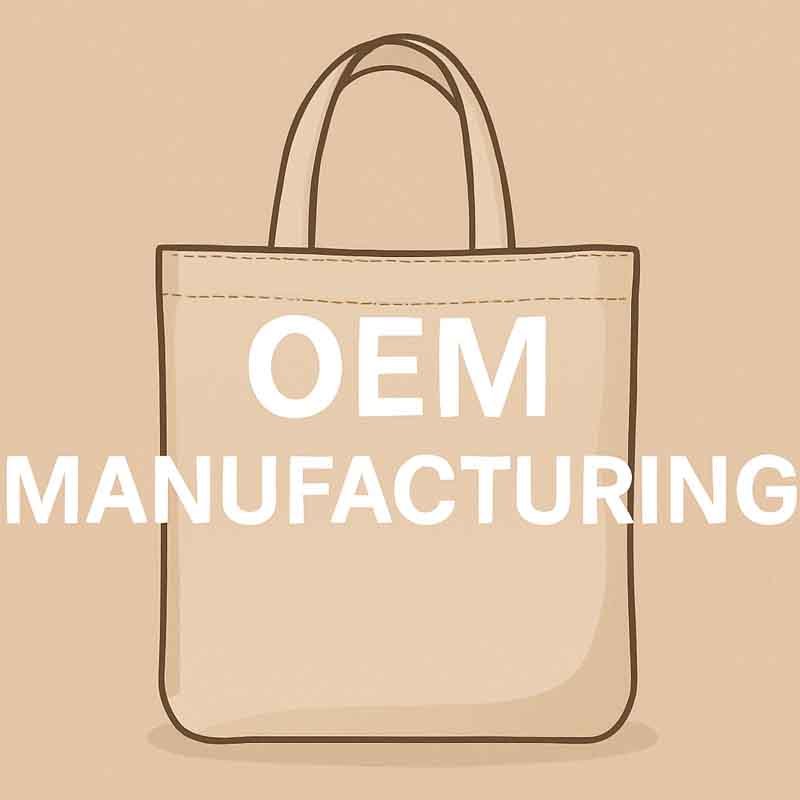
OEM in bag manufacturing means the brand provides detailed designs, patterns, material specifications, and packaging requirements to a factory, which then produces the bags exactly as instructed. You retain intellectual property rights, control every aspect from fabric choice to hardware details, and can demand rigorous quality standards. OEM is ideal for brands with in-house design capabilities seeking full customization and differentiation.
OEM Concepts
- Design Ownership & IP Control
- Brands submit proprietary CAD files, artwork, and patents.
- Factories sign NDAs and IP-protection agreements.
- Enables filing design patents on unique bag components or closures.
- Tech Pack Components
| Element | Details |
|---|---|
| Vector Sketches | Front, back, side, top views |
| Dimensions | Length, width, depth, handle drop |
| Material Specs | Fabric type, GSM, coating, origin |
| Hardware Specs | Zipper brand (YKK/Riri), buckle finish |
| Stitching Details | Thread type, stitch per inch, seam type |
| Branding Location | Embossing, debossing, screen print areas |
- Sampling & Prototyping Workflow
- Proto 1: Rough cut sample for size, shape, basic function.
- Proto 2: Full-feature sample with final materials.
- Proto 3+: Refinements until 100% approval.
- Pilot Run: 50–100 units to verify consistency before mass production.
- Cost & Lead Time Stage Timeframe Cost Estimate Initial Sample 2–3 weeks $200–$500 per sample Pilot Production 3–4 weeks Unit cost + setup fee ($1–$3) Full Production 4–6 weeks Economies of scale apply
- Use Cases for OEM
- Luxury brands crafting seasonal haute-cousu lines.
- Outdoor gear companies developing patented closures or fabrics.
- Corporate clients requiring proprietary event-exclusive bags.
What Is ODM in Bag Manufacturing?
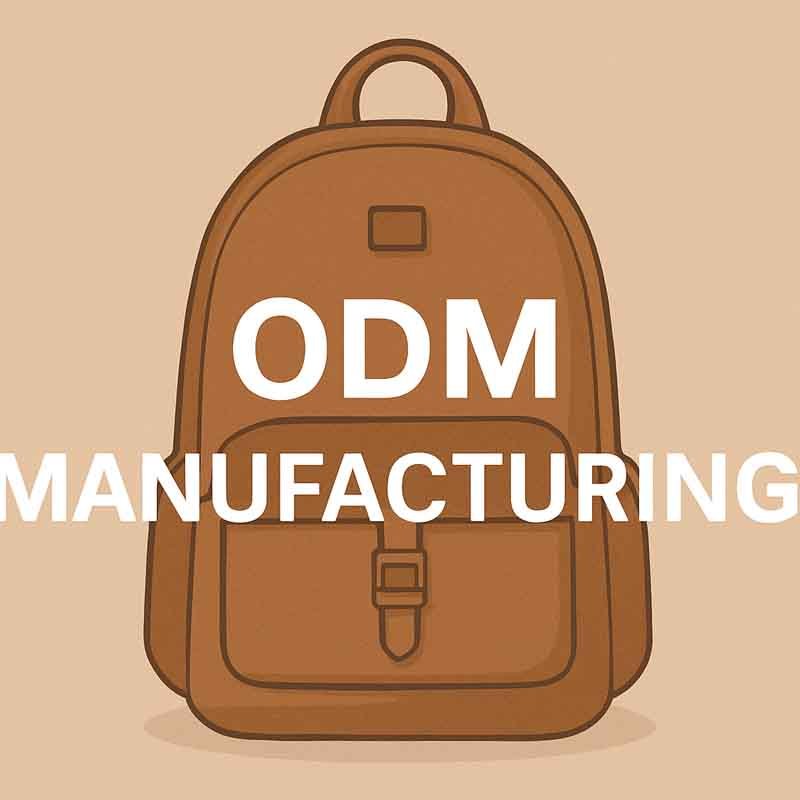
ODM in bag manufacturing refers to a model where factories supply ready-made designs—complete with pre-configured materials, hardware, and features—that brands can customize with logos or minor tweaks. The factory holds primary design rights, enabling faster product launches with lower upfront design costs. ODM is ideal for brands wishing to test new categories quickly or lacking dedicated design teams.
ODM Concepts
- Turnkey Product Catalogs
- Factories maintain collections of popular tote, backpack, and duffel designs.
- Each entry includes material swatches, hardware options, and feature lists.
- Customization Levels Scope Brand Input Logo & Labeling Embroidery, leather patches Color Variations Choose from factory’s offered palette Minimal Trims Strap adjustments, pocket layouts
- Workflow Stages
- Selection: Brands browse factory’s ODM catalog.
- Branding Samples: Factory applies branding and sends pre-production samples.
- Bulk Production: Once samples are approved, the factory executes the full order.
- When to Choose ODM
- You need fast turnaround and limited design overhead.
- You’re entering a new market/category and want to test demand.
- Design resources are constrained but quality manufacturing is essential.
What Are the Key Differences Between OEM and ODM in Bag Manufacturing?

The core differences between OEM and ODM hinge on design control and investment. OEM: you supply detailed designs and own IP, requiring higher design costs and longer development cycles but delivering unique products. ODM: the factory provides designs, reducing development time and cost while limiting customization scope and design ownership. Both models offer scalable production, but your choice depends on your brand’s design resources, budget, speed requirements, and long-term IP strategy.
OEM vs. ODM Differences
- Design Control & IP
- OEM: 100% brand ownership of designs; defensive patents possible.
- ODM: Brand licenses existing factory designs; limited or no IP filing.
- Development Cost & Time Metric OEM ODM Design Cost $5,000–$20,000+ $0–$2,000 (branding only) Development Time 10–16 weeks 4–8 weeks Sampling Iterations 3–5 rounds 1–2 rounds
- MOQ & Pricing Dynamics
- OEM: MOQs typically 500–1,000 units; tooling fees apply.
- ODM: MOQs as low as 200 units; minimal setup costs.
- Customization vs. Turnkey
- OEM: Unlimited materials, unique hardware, bespoke features.
- ODM: Limited to factory’s material and hardware libraries.
- Long-Term Brand Strategy
- OEM: Builds proprietary product lines, fosters brand loyalty.
- ODM: Rapid market validation before committing to OEM.
What Are the Benefits of Choosing OEM for Your Bag Brand?
Choosing OEM empowers brands with complete creative control, IP ownership, and design differentiation. You can innovate unique features—custom hardware, proprietary fabrics, specialized compartments—and protect these innovations via patents and trademarks. Economies of scale then drive down per-unit costs for large orders. OEM also facilitates stronger brand narratives and higher perceived value, allowing premium pricing and fostering customer loyalty.
OEM Benefits
- Full Control Over Design & Specifications
- Ensure every stitch, zipper, and gusset aligns with brand standards.
- Develop proprietary features—hidden pockets, magnetic closures, unique silhouettes.
- Brand Differentiation & Premium Positioning
- Exclusive designs avoid market saturation of common ODM offerings.
- Unique aesthetics support premium pricing and reinforce brand story.
- Scalability & Cost Efficiency Order Volume Per-Unit Cost (Estimate) 1,000 units $10/unit 5,000 units $8/unit 10,000+ units $6/unit
- Higher volumes dilute tooling and sampling costs.
- Quality Assurance & Compliance
- Implement bespoke QC checkpoints—material checks, AQL inspections, inline audits.
- Certify compliance with CPSIA, REACH, or other regional standards as needed.
- Long-Term IP Strategy
- Secure design patents, utility patents for novel features.
- Leverage patents to negotiate licensing or defensive positioning.
What Are the Benefits of Choosing ODM for Your Bag Brand?
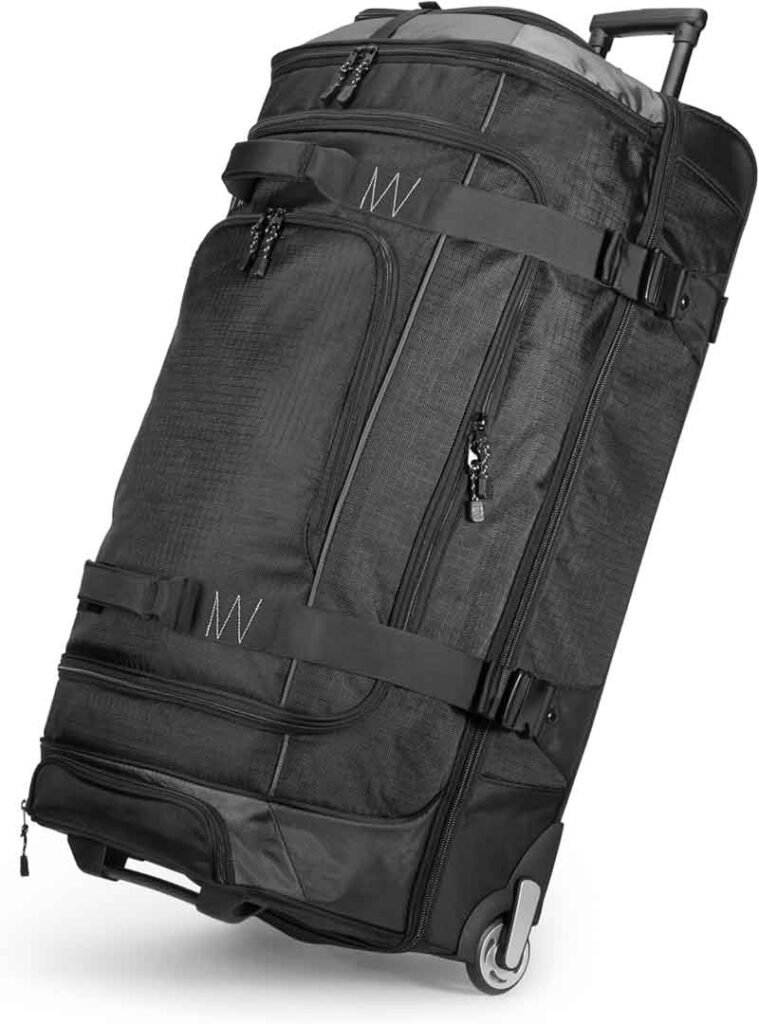
ODMs let brands launch products quickly with minimal design investment. You leverage factory-tested designs, reducing sampling cycles and tooling costs. Lower MOQs and ready-made production assets de-risk new category entries. Factories’ in-house R&D and trend insights guide product selection. This model is perfect for limited-run collections, seasonal lines, or testing markets without heavy upfront commitments.
ODM Benefits
- Speed to Market
- Pre-validated designs cut development from 12 to 4 weeks.
- Seasonal or trend-driven collections can launch mid-cycle.
- Lower Initial Investment & Risk
- No CAD or pattern-making fees.
- MOQs as low as 200 units lower financial exposure.
- Access to Supplier Expertise
- Factories recommend best-selling silhouettes, material innovations, hardware trends.
- R&D labs stay abreast of eco-friendly fabrics, novel coatings.
- Flexibility for Small Brands
- Test multiple SKUs without high design overhead.
- Pivot rapidly if a style underperforms.
- Resource Optimization
- Focus internal teams on marketing and sales while outsourcing product development.
- Maintain lean operations and reduce headcount in design.
Which Model Is Right for Your Bag Brand: OEM or ODM?
Choose OEM if you require full design autonomy, IP control, and plan high-volume production with unique features. Opt for ODM if you favor rapid deployment, lower upfront costs, and limited customization. Assess your brand’s design capacity, budget, risk tolerance, and time constraints. A hybrid approach—starting with ODM for validation, then transitioning to OEM for best-sellers—often yields the optimal balance.
- Aligning Brand Strategy & Resources
- OEM Fit: Established brands with design teams, strong capital, and IP priorities.
- ODM Fit: Emerging labels, private-label retailers, season-driven collections.
- Evaluating Time-to-Market vs. Customization Priority Recommended Model Speed & Low Cost ODM Unique Innovation OEM Market Testing ODM High Volume Scale OEM
- Hybrid Strategies
- Combine ODM’s speed for seasonal runs with OEM’s exclusivity for flagship products.
- Negotiate “design buyout” terms to transition popular ODM styles into OEM exclusives.
How Does Szoneier Support Both OEM and ODM Bag Production?
Szoneier offers end-to-end capabilities: raw-material R&D, design ideation, rapid prototyping, and low-MOQ production (from 200 units) for ODM, plus full OEM customization with tech-pack execution, tooling, and strict ISO 9001 quality control for volumes above 1,000 units. Complimentary 3D mockups, free sample design support, and agile production lines (5,000 bags/month) ensure fast, cost-effective fulfillment for both models.
Szoneier’s OEM/ODM Capabilities
- End-to-End R&D & Design
- In-house material lab testing tensile strength, abrasion resistance, and finishes.
- CAD and 3D sample visualization tools accelerate design approval.
- Rapid Prototyping & Sampling Service Lead Time ODM Sample 1–2 weeks OEM Proto & Rev1 2–3 weeks Pilot Production Run 3–4 weeks
- Low MOQ & Scale-Up Flexibility
- ODM: MOQ 200 units per SKU.
- OEM: MOQ 500–1,000 units, scalable to 50,000+ via multiple lines.
- Quality Assurance & Compliance
- ISO 9001 factory audits, AQL 2.5 inspection for seams, hardware, prints.
- Environmental compliance: REACH, CPSIA, and Eco-friendly dye options.
- Logistics & After-Sales
- Consolidated shipping, drop-shipping, and bonded warehouse options.
- Post-delivery support includes warranty, repair protocols, and reorder automation.
Conclusion & Inquiry
Choosing the right manufacturing model is crucial for the success of your bag brand.Understanding the nuances of OEM and ODM empowers your bag brand to choose the model that aligns with your design ambition, budget, and timeline. Whether you crave total control with OEM or lightning-fast product launches via ODM, Szoneier’s 18 years of integrated R&D, manufacturing, and quality control makes us the ideal partner.
Ready to elevate your luggage and bag line? Contact Szoneier for free design mockups, low-MOQ sampling, and turnkey OEM/ODM solutions.Partner with us to bring your vision to life with top-tier manufacturing expertise that meets the demands of today’s competitive market.



